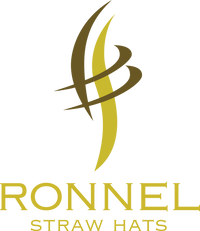How to Recognize a Genuine Panama Hat?
The Panama hat is the very embodiment of summer elegance. A symbol of refinement and craftsmanship, it’s often misunderstood or mistaken for ordinary mass-produced straw hats. Yet, a genuine Panama hat is much more than a fashion accessory: it’s a true work of art, the result of a unique ancestral craft. So, how can you tell a real Panama hat from an imitation? Here are the key elements to know.

1. Origin: It comes from Ecuador, not Panama!
The first clue is geographical. A genuine Panama hat is handmade in Ecuador, typically in the regions of Cuenca or Montecristi. It’s a historical paradox: although it’s called a "Panama hat," its origin is Ecuadorian. The name comes from the fact that these hats were exported from the port of Panama in the early 20th century, especially during the construction of the Panama Canal. President Roosevelt himself was photographed wearing one during a visit to the canal site, boosting its popularity.

2. The Material: Toquilla Straw
A true Panama hat is made from toquilla straw, a local plant (Carludovica palmata) mainly grown on Ecuador’s coast. This fiber is flexible, lightweight, and durable. It allows for fine, even weaving. If the hat feels stiff, rough, or is made from synthetic fibers, it’s not a genuine Panama.
3. The Weave: Fineness and Regularity
The weave is the soul of the Panama hat. A real one is handwoven, sometimes over several weeks, depending on the fineness of the work. The finest hats have such tight, even weaving that they almost look machine-made. A common metric is the number of “weaves per inch”: the higher the count, the better the quality. A simple test: hold the hat up to the light. If the pattern is consistent and you see few or no holes, it’s a good sign.
4. The Crown Center: The Rosette or "Knot"
Where the weaving begins at the top of the hat, you’ll find a small rosette or central “knot.” This is a key indicator of genuine hand-weaving. If the center is rough, badly formed, or missing, it’s likely a machine-made imitation.
5. Flexibility and Feel
An authentic Panama hat is supple. Some models can even be rolled for travel without losing their shape. It should feel smooth, almost silky to the touch — unlike fakes, which tend to be rigid and scratchy.
6. Visible Craftsmanship
Every Panama hat is unique. Look closely and you may spot small imperfections in the weave — proof of true handcrafting. These minor irregularities are signs of authenticity, in contrast to the sterile perfection of factory-made items.
7. The Price: A Telltale Sign
A genuine Panama hat isn’t cheap. The price reflects the time, skill, and dedication of the artisan. Hats sold for under US$60 or US$70 are likely imitations. High-end models can cost several hundred, or even thousands of euros — especially the exceptional Montecristi hats.
8. Guaranteed Origin: Labels and Certificates
Some brands (like RONNEL) guarantee the artisanal and Ecuadorian origin of their hats. Look for labels such as “100% handmade in Ecuador” or “Toquilla straw hat.” Premium models may also come with a certificate of authenticity.
Check our collection of authentic hats and discover unique pieces handwoven in Ecuador.




